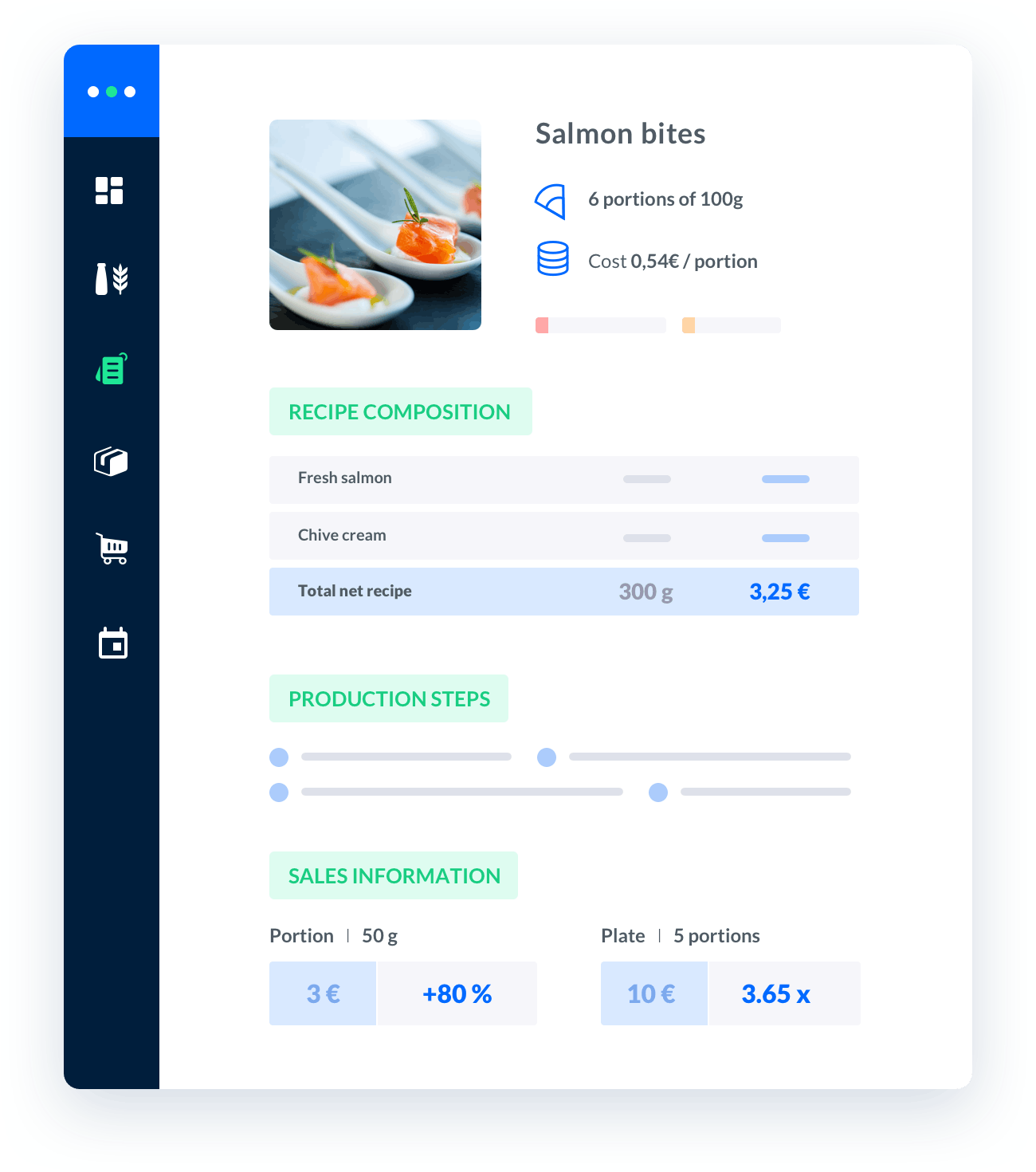food costing and pricing formula
food costing and pricing formula Introduction.In the competitive catering industry, understanding food costing and pricing is crucial for maintaining profitability while providing high-quality products.

Melba: the food cost app to optimize the profitability of your restaurant
Discover how to optimize the profitability of your restaurant with melba

The ultimate guide to food cost restaurant
Learn more about the food cost basis and how to reduce your food cost percentage
food costing and pricing formula
Introduction
In the competitive catering industry, understanding food costing and pricing is crucial for maintaining profitability while providing high-quality products. This article aims to provide comprehensive insights into the food costing and pricing formula, enabling professionals to optimize their pricing strategies and maximize profits.
Understanding Food Costing
Food costing is the process of determining the cost of each ingredient used in a dish and calculating the overall cost of producing a menu item. It involves considering the cost of raw materials, labor, overhead expenses, and any other associated costs. By accurately calculating food costs, businesses can establish appropriate selling prices that ensure profitability.
Calculating Ingredient Costs
When determining ingredient costs, it is essential to consider the quantity required for each menu item and the purchase price per unit. To calculate the ingredient cost for a specific dish, multiply the quantity required by the purchase price per unit. Repeat this process for all ingredients and sum the results to obtain the total ingredient cost.
Factoring in Additional Costs
Aside from ingredient costs, there are other expenses to consider, such as labor, utilities, rent, and packaging. These costs should be allocated proportionally to each menu item based on their contribution to the overall expenses. Including these additional costs ensures a more accurate food cost calculation.
Food Cost Percentage
Food cost percentage is a vital metric for determining the profitability of a dish. It represents the percentage of revenue that goes towards covering the cost of ingredients and associated expenses. To calculate the food cost percentage, divide the total cost of producing a menu item by the selling price and multiply by 100.
Effective Pricing Strategies
Setting the right prices for menu items is crucial to attract customers and maximize profits. Below are some effective pricing strategies to consider:
Competitor Analysis
Conducting a thorough analysis of competitors' pricing strategies helps identify market trends and set competitive prices. Analyze similar dishes offered by competitors and adjust your prices accordingly to remain competitive while ensuring profitability.
Value-Based Pricing
Consider the perceived value of your menu items when setting prices. Factors like quality, uniqueness, and customer experience contribute to the perceived value. Offering high-quality ingredients, exceptional service, or unique dishes can justify higher prices.
Menu Engineering
Implementing menu engineering techniques can optimize profitability. Categorize menu items based on their popularity and profitability, and promote high-profit items by highlighting them strategically on the menu. Adjust prices for low-profit items or consider removing them altogether.
Optimizing Profitability
To maximize profitability, it is essential to continually evaluate and adjust your food costing and pricing strategies. Consider the following tips:
Regular Cost Reviews
Regularly review ingredient costs and adjust pricing accordingly. Fluctuations in ingredient prices can impact profitability, so staying updated is crucial. Negotiating better deals with suppliers can also help lower costs.
Monitor Sales Data
Analyze sales data to identify top-performing dishes and their contribution to overall revenue. This information can guide pricing decisions and help allocate resources effectively.
Customer Feedback
Listen to customer feedback regarding pricing and adjust accordingly. Balancing customer expectations and profitability is essential for long-term success.
Conclusion
Understanding the food costing and pricing formula is vital for professionals in the catering industry. By accurately calculating food costs, implementing effective pricing strategies, and optimizing profitability, businesses can thrive in a competitive market. Regularly reviewing costs, monitoring sales data, and considering customer feedback are key elements of a successful pricing strategy.






